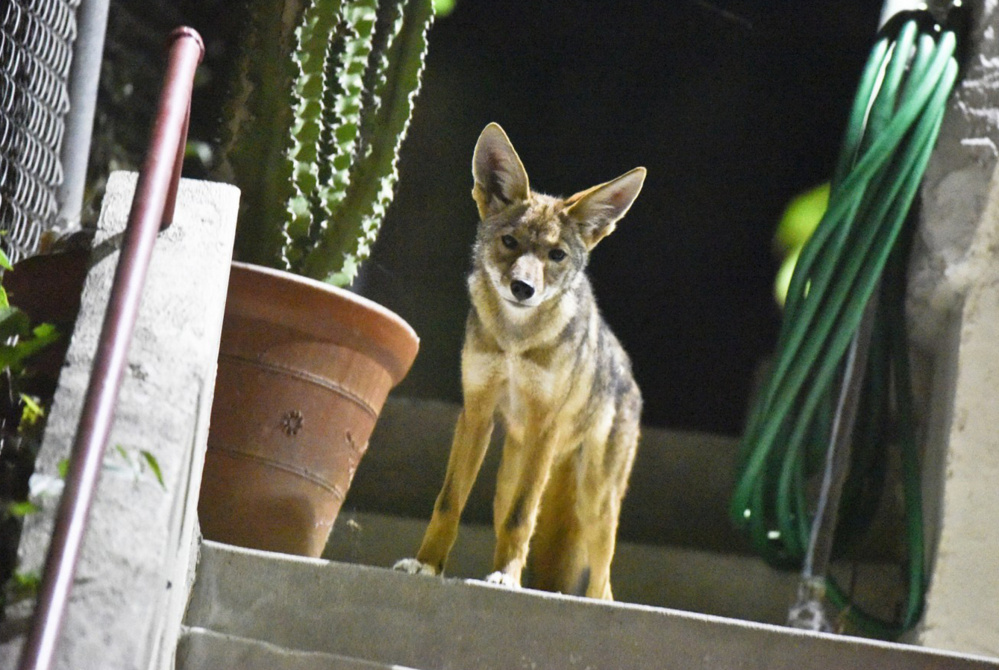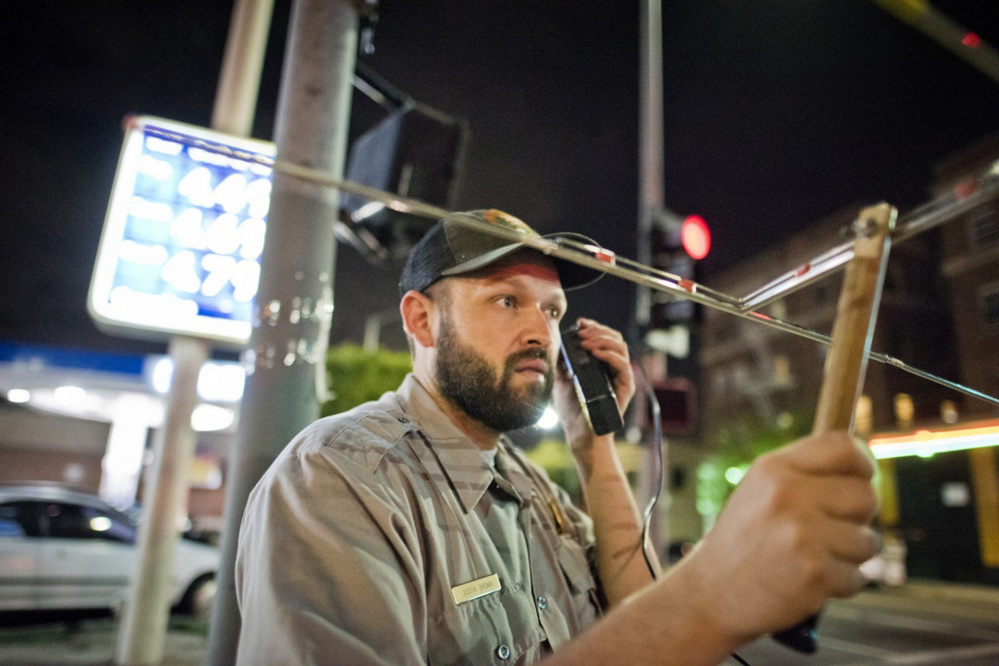LOS ANGELES — It was nearly the hour of the wolf, and there were no coyotes. Not a single beep on the GPS tracker.
Justin Brown parked his jeep on a dark road and sighed. “I’m going to get out and see if I hear anything,” he said. He was on the edge of a mountainside, pointing his antenna at the sleeping city, hoping it would detect a radio-collared coyote. Still nothing.
Brown is a biologist at the National Park Service’s Santa Monica Mountains National Recreation Area. He tracks coyotes to understand how they live in a fragmented landscape. What does it mean to be a wild animal in an increasingly urbanized environment?
Park Service researchers began monitoring coyotes in the city’s mountains in 1996, hoping to answer that question. Last year, Brown became the lead of the L.A. Urban Coyote Project, a new program aimed at helping locals and lawmakers make informed decisions about the wily canid that lives in the city’s heart, not decisions predicated on fear.
A few nights earlier, Brown had radio-collared a lactating female in a park intersecting the Los Angeles River. As we drive through an industrial plot, he describes other coyotes he’s followed. There’s a one-eyed female who somehow crossed a 10-lane freeway. There’s a pack that has made a college campus its home.
It’s hard to believe that a carnivore of this size – 30 to 70 pounds, with a long snout, upright ears and a bushy tail – could live among us without being noticed.
ADAPTABLE CRITTERS
Coyotes have spread throughout North America, colonizing cities, though there’s no solid estimate of their population. They’ve been here in California since the Pleistocene, and they continue to find food, shelter and people-free space in this megacity of more than 18 million people. But biologists still aren’t even sure how many city coyotes there are, or whether they prefer scavenging garbage or hunting small game.
That’s why Brown spends early mornings giving chase. By testing coyote whiskers, he can figure what’s on their menu. Corn isotopes means human food. The Park Service has also recruited volunteers to scoop coyote scat. But it might take another five years to gather enough information to make conclusions about urban coyote diets, he says.
Last year, the NPS tracked two coyotes living entirely in developed areas. One was a mother with five pups denning in the packed Westlake neighborhood. Dubbed C-144, she’s believed to have one of the most urban home ranges of any canid ever studied.
Other findings have been grimmer. C-146, a juvenile female, was found dead in MacArthur Park. Four types of anticoagulant rat poisons were found in her system.
Brown says people are afraid of coyotes, and gathering information about how they live benefits both species.
Tens of thousands of coyotes are killed by the government and hunters annually. But attacks are rare, Brown said, and often happen when humans feed them, which is illegal. Even citified coyotes seem to go out of their way to avoid people.
LIKE HIDE AND SEEK
It may sound glamorous to chase carnivores, but the reality is that most of the time is spent waiting, and wildlife doesn’t show on cue.
But after pulling back into a parking lot and exiting the van, Brown yelped: “Right there!”
A lone coyote skipped past, its head bobbing inquisitively,. It picked through trash, then darted away.
“There was no collar,” Brown said. That means it wasn’t the one he was tracking.
An eerie moment of silence passed before the coyote reappeared a dozen yards away. Something – maybe an opossum – dangled from its mouth.
Sensing his audience, the animal slammed its prey to the ground in a death blow and then trotted off with the meal in its jaws. Like a ghost, the coyote was gone, as if was never even there.
Send questions/comments to the editors.




Success. Please wait for the page to reload. If the page does not reload within 5 seconds, please refresh the page.
Enter your email and password to access comments.
Hi, to comment on stories you must . This profile is in addition to your subscription and website login.
Already have a commenting profile? .
Invalid username/password.
Please check your email to confirm and complete your registration.
Only subscribers are eligible to post comments. Please subscribe or login first for digital access. Here’s why.
Use the form below to reset your password. When you've submitted your account email, we will send an email with a reset code.